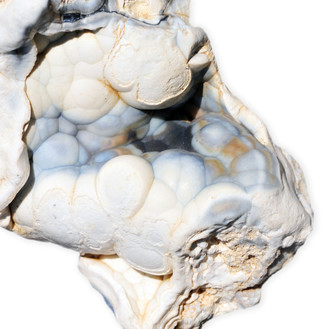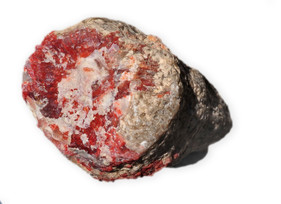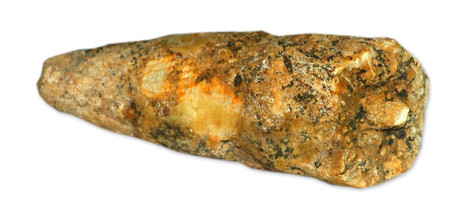|
|
| Name Origin | The name is derived from Latin corallium |
|---|---|
| Chemical Formula | CaCO3 |
| Color | White, flesh pink, pale to deep rose red, salmon pink, red to dark red, blue (rarely), black. Maybe banded or zoned and show cellular structure |
| Hardness | 3.5-4 on the Mohs scale |
| Crystal System | Hexagonal |
| Cleavage | None |
| Specific Gravity (SG) | 2.6-2.7. (note: black coral, composed of conchiolin is 1.34) |
| Lustre | Dull to vitreous |
| Occurrence | Throughout the Mediterranean Sea and Read Sea areas; Southern Ireland; Spain; Mauritius, Malaysia; Japan; Australia; Hawaii; Taiwan. |
Coral Precious stone in Jewellery
Coral jewellery is usually made from an especial, tree-like coral called corallium nobile. This type of coral is a very soft stone (hardness of 3 – 3.5 Moh) therefore care should be taken using coral jewellery (it is very easily scratched because of its extreme softness). Coral branches may be several inches to several feel long but are not always thick. Because of coral’s opacity and softness, it is not faceted for jewellery. Coral is usually fashioned into beads, cabochons, and cameos. Coral softness makes the stone an excellent material for carving. Coral can be easily shaped and cut by files and abrasives. Large fine carvings of rich-colored material are very rare and costly.
Coral can be imitated from glass, porcelain, and plastic. A simple test to recognize a genuine coral from the imitated one is to drop a little acid (such as vinegar) on the coral. The acid will create bubbles on the genuine coral. Also, coral can be improved by staining. Rubbing the coral with a cloth damped with nail polish remover can be used to detect the coral that have been improved by staining.
It should be noted that coral should not get too hot as it deteriorates the material and the color will fade. The color of coral can fade naturally over time; you will see evidence of this in antique jewellery.
Coral can be imitated from glass, porcelain, and plastic. A simple test to recognize a genuine coral from the imitated one is to drop a little acid (such as vinegar) on the coral. The acid will create bubbles on the genuine coral. Also, coral can be improved by staining. Rubbing the coral with a cloth damped with nail polish remover can be used to detect the coral that have been improved by staining.
It should be noted that coral should not get too hot as it deteriorates the material and the color will fade. The color of coral can fade naturally over time; you will see evidence of this in antique jewellery.
myths and magical properties of coral
|
|
Since early times, coral has been attributed as having numerous talismanic and medicinal properties. The Greeks believed that coral originated when drops of dried blood of Medusa’s severed head was carried into the ocean by sea nymphs and planted there. The Chinese valued coral because they believed that it represented a precious tree that grew under the sea and flowered once every 100 years. Until quite recently, the medicinal qualities of coral were believed to be numerous. The French created rosaries of coral to hang around their necks in the belief that this would stop bleeding. It was thought that it could prevent epilepsy in children if ingested in powdered form. It could also soothe stomach aches, eye problems and digestion. In the late Middle Ages, a certain doctor gave directions on how to create coral pills, by powdering coral and mixing it with liquid to create balls for intake. Up until the end of the 1800s, it
|
was believed that a variation of this remedy could cure whooping cough. In this way, coral was highly valued as medicine for a variety of ills. With regards to talismanic qualities, the Greeks of early times thought that coral could protect them against problems such as witchcraft and poisons. It was also thought that coral could bring the wearer protection from enemies, especially during war. Dreaming of a shiny and beautiful coral meant good health while dreams of lacklustre coral meant ill health. It was also believed that coral could protect women against sterility, and that ingesting powdered coral could heighten the chances of bearing a male child. Coral was also valued for its beauty and colour, and was worn as adornments simply for aesthetic purposes.
Photo Credit: www.shutterstone.com









